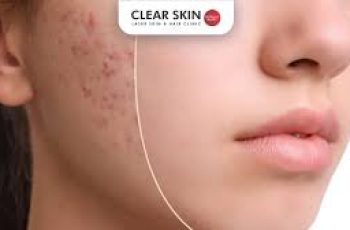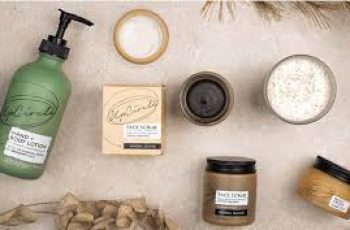
Build an Acne Skin Care Routine For Your Skin Type
Acne is a complex skin condition that affects millions of people worldwide.
Whether you’re battling persistent breakouts, hormonal flare-ups, or stubborn cystic acne, the key to clearer skin lies in a skincare routine tailored just for you.
But with so many products and conflicting advice out there, how do you find the right routine that suits your skin type and unique concerns?
The truth is, there’s no one-size-fits-all solution. Acne isn’t just about clogged pores—it’s also about your skin’s sensitivity, oiliness, dryness, inflammation levels, and even your hormone cycles. That’s why understanding your skin type is the first step toward building the best acne skincare routine that truly works.
Why Knowing Your Skin Type Matters for Acne
Many people believe acne is only an issue for oily skin, but acne can affect all skin types—oily, dry, sensitive, or combination. In fact, out of the 16 Baumann Skin Types®, 8 include acne-prone skin variations. Each type has different needs and reacts differently to acne treatments.
For example:
Oily skin benefits from exfoliating acids like salicylic acid and retinoids to reduce oil production and clear pores.
Dry skin requires gentler, hydrating products and barrier repair moisturizers to avoid irritation.
Sensitive skin needs soothing, anti-inflammatory ingredients to calm redness without stripping the skin.
Hormonal acne often demands hormone-targeting treatments rather than traditional antibacterial products.
That’s why before picking products at random, it’s crucial to understand your skin’s Baumann Type to customize your acne routine effectively and safely.
Take Our Custom Acne Skin Care Routine Quiz
To help you find the perfect acne routine for your skin type and lifestyle, we developed a simple acne skin care routine quiz.
This dermatologist-designed quiz analyzes your skin type, acne severity, and preferences, then recommends a personalized routine and product options.
Whether you want natural products, medical-grade formulas, vegan or clean beauty options, or budget-friendly choices, our algorithm tailors your acne regimen to exactly what your skin needs.
[Take the Acne Skin Care Routine Quiz Now]
Understanding Different Acne Types and Their Routines
Before diving into routines, it’s important to recognize the different types of acne you might have, as they each need a specialized approach.
1. Cystic Acne
Cystic acne is the most stubborn and painful type, forming deep, inflamed nodules under the skin.
Because the acne lesions develop inside the hair follicle, topical products have a hard time penetrating deeply enough to treat them effectively.
For this reason, dermatologists often prescribe oral medications such as:
Isotretinoin (Accutane) – a powerful retinoid that shrinks oil glands and clears severe acne.
Antibiotics (like doxycycline) – reduce inflammation and bacterial growth.
Hormone-blocking pills (spironolactone) – reduce hormone-driven acne.
If you start on these medications, your skin type may shift—usually from oily to dry—so you’ll need to adjust your skincare accordingly.
If you prefer to try a topical routine before oral meds, here’s a dermatologist-approved routine for cystic acne:
Cystic Acne Routine (When Not on Pills)
Morning:
Cleanser: Use a low pH cleanser that helps loosen dead skin cells, reduce skin pH, and make the skin less hospitable to acne-causing bacteria.
Eye Cream: Optional but recommended to protect delicate eye skin from acne treatments.
Acne Treatment: Use one of these—benzoyl peroxide gel, hydroxyacid peel pads or toner, or your doctor’s prescribed topical acne medication (not tretinoin in the AM).
Moisturizer: Noncomedogenic and suited to your skin type. Oily skin may skip moisturizer if using hydrating sunscreen. Dry skin should use barrier-repair creams.
Avoid hyaluronic acid if using strong acne treatments as it can increase irritation.
Sunscreen: A noncomedogenic SPF to protect from sun damage and pigmentation.
Evening:
Cleanser: Use a gentle, non-foaming cleanser for dry skin or a foaming cleanser for oily skin to avoid over-exfoliation.
Eye Cream: Especially important at night to prevent irritation from treatments.
Acne Treatment: Use products with anti-inflammatory, antioxidant, skin-lightening, or anti-aging ingredients tailored to your concerns.
Moisturizer: Same as AM.
Retinoid: This is the most critical step for cystic acne—use the strongest retinoid you can tolerate without redness or stinging.
2. Oily Acne-Prone Skin
Oily skin produces excess sebum, which can clog pores and cause breakouts. Luckily, oily skin types generally tolerate acne treatments like salicylic acid and retinoids better.
Routine Tips:
Use salicylic acid cleansers and exfoliants to clear pores.
Incorporate retinoids at night to regulate skin cell turnover.
Consult your dermatologist about Winlevi (clascoterone), a newer prescription that reduces oil production and unclogs pores, ideal for oily acne-prone skin.
3. Acne-Prone Sensitive Skin
Sensitive skin is prone to inflammation and reacts poorly to harsh exfoliants, strong foaming cleansers, and aggressive acne treatments.
Gentle Acne Routine Must-Haves:
Anti-inflammatory ingredients such as niacinamide, green tea extract, resveratrol, bisabolol, and caffeine.
Avoid frequent use of benzoyl peroxide or high concentrations of acids if irritation occurs.
Use gentle, non-foaming cleansers and barrier-repair moisturizers.
4. Hormonal Acne
Hormonal acne typically appears along the jawline and chin and worsens before menstrual cycles.
Unlike other acne, it isn’t primarily caused by bacteria, so antimicrobials like benzoyl peroxide may not be very effective.
Recommended Treatments:
Prescription Winlevi (clascoterone), which targets hormone receptors in the skin, can be used morning and night in Step 3 of your routine.
Incorporate gentle, non-irritating moisturizers and sunscreen.
Acne Scars and Dark Spots
After acne clears, many are left with marks or discoloration that can take weeks or months to fade. These pink or brown spots are not permanent scars but post-inflammatory hyperpigmentation.
How to treat:
Use anti-redness ingredients like caffeine and niacinamide to soothe skin.
Incorporate exfoliants (AHA or BHA) carefully to speed skin cell turnover.
Use tyrosinase inhibitors and vitamin C serums to lighten dark spots safely.
Natural and Clean Acne Skin Care Options
For those who prefer natural or clean beauty, many plant-based ingredients help fight acne, such as willow bark (natural salicylic acid) and green tea.
However, there is no effective natural retinoid, so you will still need a dermatologist-recommended retinoid product at night for best results.
Our quiz offers natural and clean product recommendations tailored to your preferences, so you can have an effective routine without compromising your values.
The Simple Acne Routine: 3 Essential Steps
If you want to start with a simple regimen, focus on these basics:
Cleanser: Use an exfoliating acid cleanser like salicylic acid or glycolic acid.
Treatment: Apply salicylic acid, benzoyl peroxide, or retinoid based on your skin’s tolerance.
Moisturizer: Choose a noncomedogenic moisturizer suited to your skin type.
Consistent use over at least 8 weeks is necessary to see results, as acne cycles take about two months to clear.
Dermatologist Recommended Routine Structure
Here’s a breakdown of the typical 5-step morning and evening acne routines that dermatologists recommend:
AM Routine PM Routine
1. Cleanser (AHA/BHA unless new to retinoids) 1. Cleanser
2. Eye Product (optional) 2. Eye Product
3. Acne Treatment (toner, serum, or cream) 3. Acne Treatment (anti-inflammatory, antioxidant)
4. Noncomedogenic Moisturizer 4. Moisturizer
5. Sunscreen 5. Retinoid
How Long Does It Take for an Acne Routine to Work?
Patience is key. Acne is an inflammatory condition of the hair follicle caused by bacteria, clogged pores, and disrupted skin cell turnover.
Because of the skin’s 8-week renewal cycle, it takes at least 8 weeks of consistent treatment to notice improvement.
Never stop your routine early; acne requires maintenance to prevent recurrence.
Why Customize Your Acne Routine?
Every product you use should target specific acne triggers and not interfere with other products in your regimen.
For example, layering strong exfoliants with retinoids without proper moisturization can lead to dryness and irritation.
Personalization is essential to address:
Acne severity
Skin sensitivity
Underlying issues like dehydration, pigmentation, or inflammation
Lifestyle and personal preferences (natural, vegan, budget)
Final Thoughts: Build Your Perfect Acne Routine Today
Your journey to clear skin starts with understanding your unique skin type and acne triggers.
Our dermatologist-developed Acne Skin Care Routine Quiz is the best way to get a personalized routine tailored for your skin.
No more guesswork, no more one-size-fits-all advice—just a clear path to healthier, acne-free skin with product options you’ll love.
Ready to start?
[Take the Acne Skin Care Routine Quiz Now]


